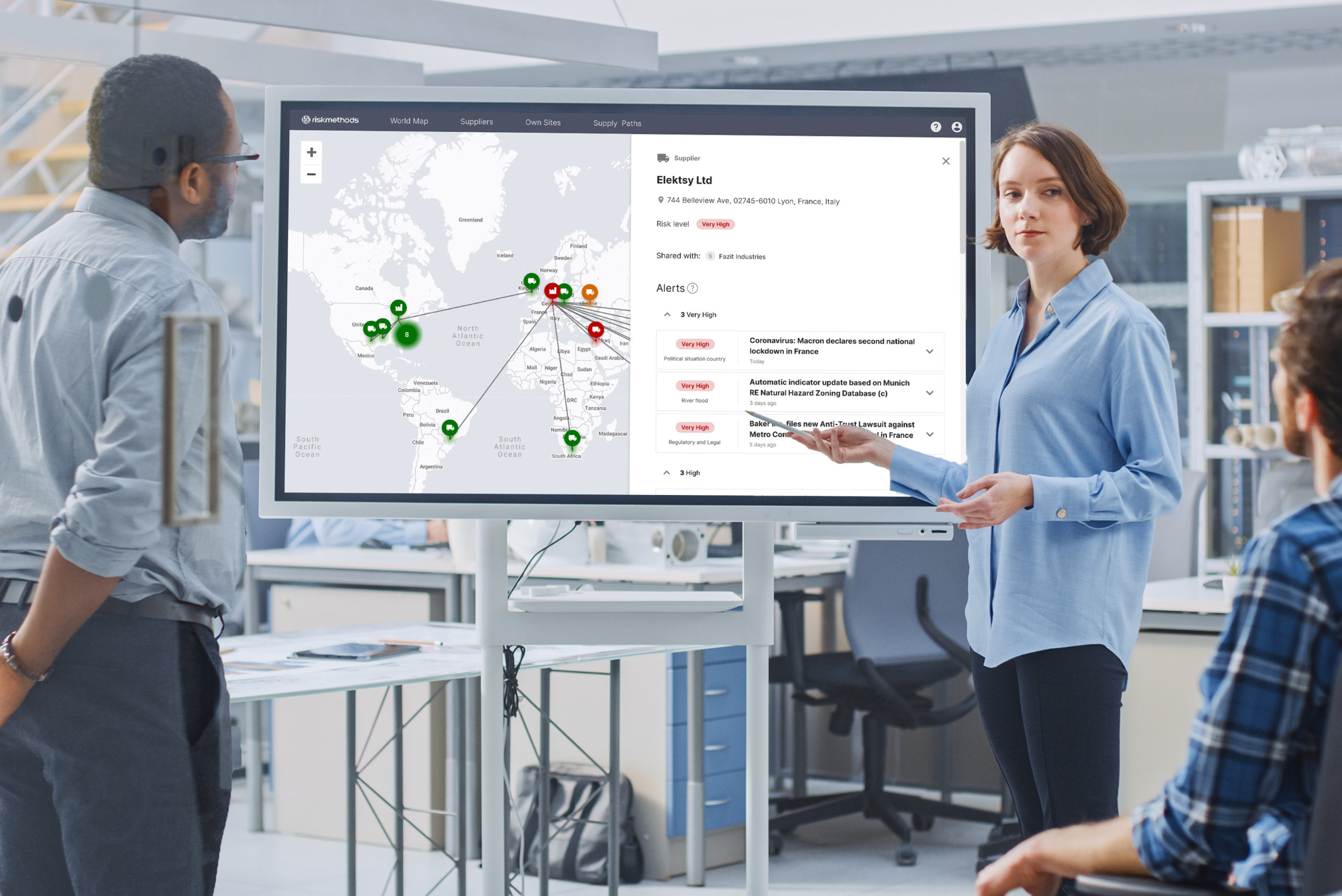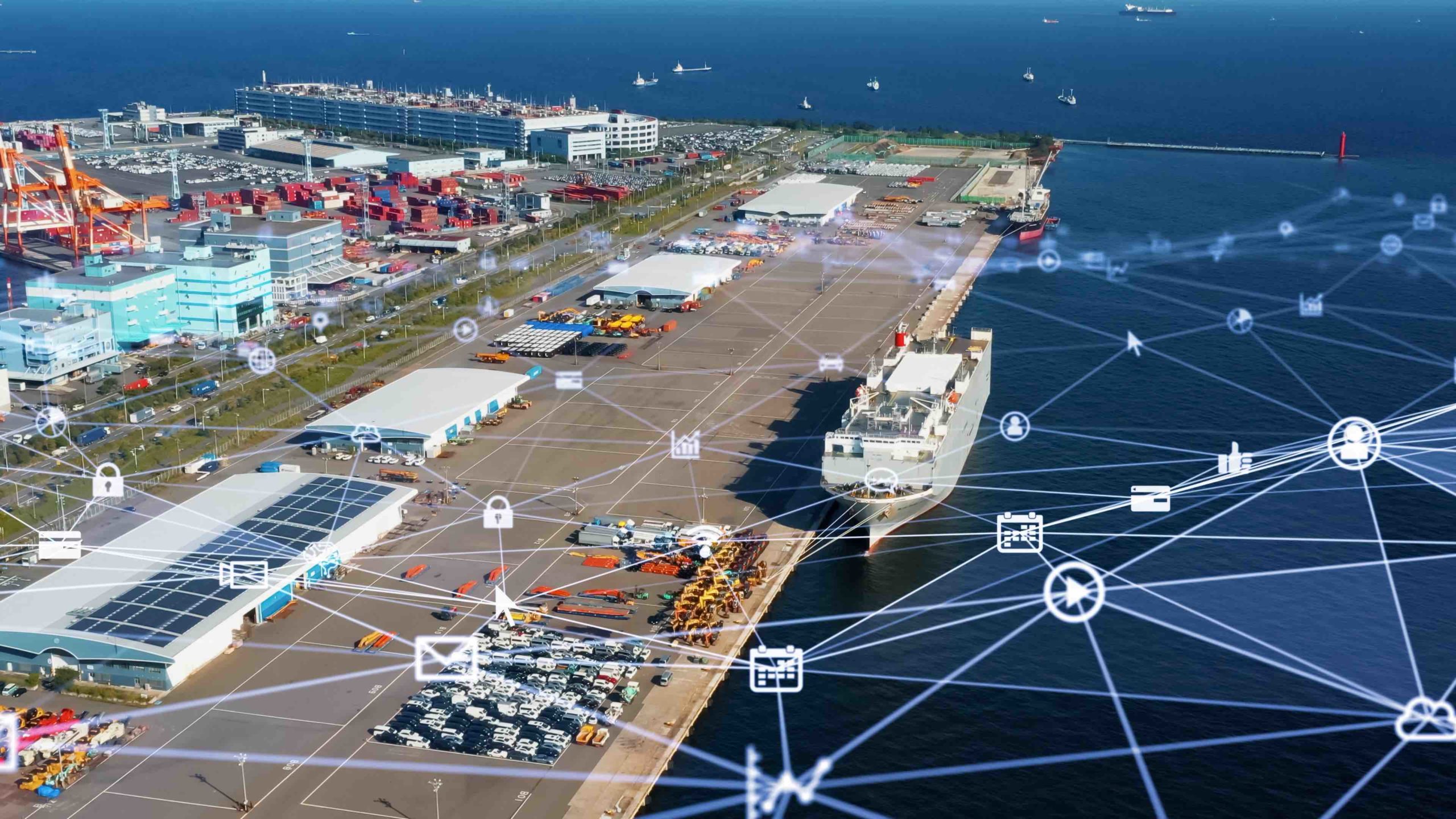Sub-Tier Visibility
Visualize your sub-tier supply chains with confidence.
Visualize your sub-tier supply chains with confidence.
Collaborate across your organization and with your suppliers to proactively mitigate risk.

Gain access to verified sub-tier relations to individual site levels. Understand flow of materials and goods to and from your suppliers.
Suppliers gain immediate visibility into risk in their own supply chains. Such risk insights help increase transparency, reduce financial risk and demonstrate risk management for their stakeholders.


By gaining visibility of risk throughout multiple tiers of your supply base, you can react faster and reduce the costs of mitigating risk.
More than 75% of companies have only tier-1 visibility. However, every 2nd supply disruption originates from tier 2 or below. Only if you know where the risks are, can you create resilient supply networks.


Improve relationships with customers and suppliers to help improve resilience and business integrity efforts.
Benefit from purpose-built solutions with a seamless connection.
Effective SCRM involves monitoring millions of data sources for emerging risks. In global supply chains, the task is beyond human capacity. Risk Intelligence leverages the power of artificial intelligence to monitor data around the clock.
Whether you want to see your supply chain on the big screen or the small screen, Sphera SCRM Apps have you covered.
Impact Analyzer helps you to minimize the business impact of risk by assessing suppliers’ criticality and detecting vulnerabilities at the category level. Adding impact dimensions like revenue and spend allows you to assess the extent of damage that a potential supplier failure could have on the supply chain. This also helps you select the suppliers that are best for your business.
Action Planner helps you collaborate across your organization and with your suppliers to orchestrate the tasks needed to both proactively and reactively mitigate risk. Use pre-built and customizable action plans, so you can quickly take action before incidents become critical.
Risk Assessment automates supplier and third-party assessment processes, enriches evaluation of risk scores and integrates survey results into business partners’ risk profiles. Our versatile supply chain assessment tool simplifies supplier qualification and monitoring, improves data accuracy, reduces manual data collection and closes the risk feedback loop.
Compliance Incident Management (CIM) captures all relevant incident data. CIM comprehensively checks your supply chain for compliance-related violations and can be customized with company-related specifics. This enables you to monitor supply chain incidents that may violate regulatory requirements or internal sustainability goals and put you at greater financial or reputational risk.
55% call out tier two and beyond as source of disruption.
Best practice for motivating business partners to disclose risk-related information is to seek third-party information and provide technology as an incentive. This encourages direct partners to manage their own ecosystems and share the data you need.
According to boards of directors, the top priorities for increased investments include supply chain composition (52%), business continuity plans (43%), and managing and incentivizing suppliers (41%).
There is a desire for solutions that facilitate more valuable supplier interactions, with 38% of respondents investing in better supplier collaboration.

Learn what Sphera’s Supply Chain Risk Management software can do for your enterprise.